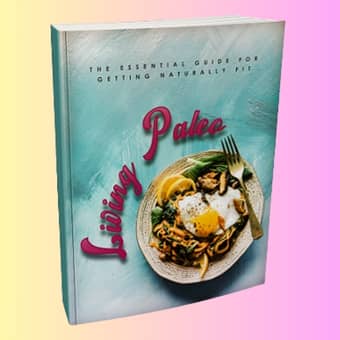By knowing how food color impacts your appetite, you can choose better. This helps you eat less and still feel satisfied. Colors in your meals can change how you see them. This can help you eat fewer calories while still enjoying great flavors. This guide looks at how food color affects your appetite. You’ll find tips to add colorful foods that help you feel full and satisfied. These choices will also support your wellness goals.
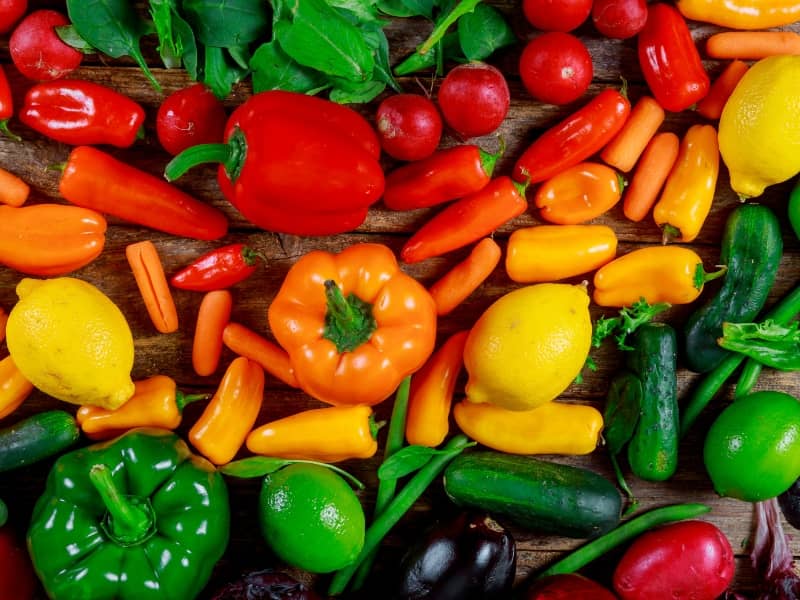
Table of Contents
- I. The Psychology of Color and Its Impact on Food Choices
- II. Unpacking the science of appetite regulation
- III. The Color Palette of Portion Control
- IV. Practical Strategies for Using Color to Manage Appetite
- V. Case Studies: Color in Action for Weight Management
- Food Color and Appetite: Eat Less, Feel More Satisfied
- FAQ
Key Takeaways:
-
Food color can influence appetite and satiety levels, impacting how much we eat.
-
Some colors, such as blue, can reduce appetite; warm colors like red and yellow can boost it.
-
Choosing colorful foods can make meals more enjoyable and encourage mindful eating.
-
Food color can impact how we perceive taste and flavor. This can lead to larger portion sizes.
-
Color psychology can aid meal planning. It helps people control portion sizes and feel more satisfied with their meals.
I. The Psychology of Color and Its Impact on Food Choices
The colors surrounding your food choices can have a deep influence on them. Colors can trigger certain feelings. These feelings can influence your cravings and how much you eat. Bright colors like yellow and red can boost energy and appetite. This often leads to overeating. Cooler shades like blue and green create calmness. This often leads to lower food consumption. Once you notice these psychological triggers, you can use them in your meals and snacks. This can help you manage your appetite.
1.1. Color perception and emotional response
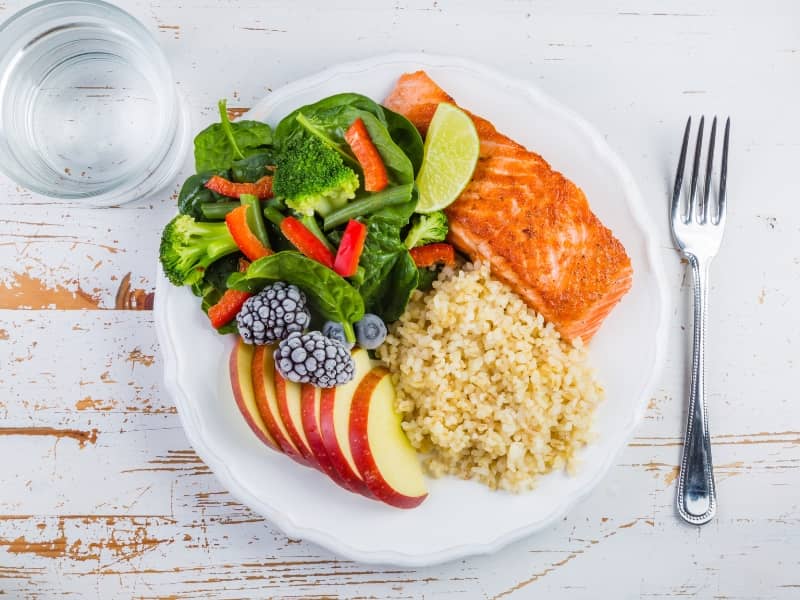
Colors have a strong connection to emotions. They can trigger different feelings and reactions. Red often sparks excitement or hunger. In contrast, blue can calm the mind and lower appetite. Color affects how you experience food. It changes not only the look of the dish but also your feelings about eating it. Using this idea can help you create a meal space that supports healthier eating habits.
1.2. Cultural influences on color preferences
Cultural backgrounds shape your color preferences. These preferences affect your food choices. In some cultures, red stands for good luck and happiness. This leads to more people eating red-colored foods. In Western societies, black usually stands for negativity. This leads to people avoiding certain black foods. Colors can change how much you like certain foods.
Knowing how culture shapes color choices can help you improve your food environment. In India, people celebrate bright colors during festivals. They create a positive vibe around food. Cuisines from minimalist regions often use neutral colors. This can affect appetite. Recognizing these cultural influences can boost your meal enjoyment. It also helps you adopt healthier eating habits that fit your background or goals.
II. Unpacking the science of appetite regulation
Appetite regulation involves both biological and environmental factors. These influences determine how much you eat. Your body doesn’t depend on hunger signals. Hormones, chemicals, and your surroundings also influence your appetite. Knowing these mechanisms helps you make better eating choices. This way, you can control portions and please cravings with greater success.
2.1. Neurotransmitters and Their Role in Hunger

Neurotransmitters like dopamine and serotonin play significant roles in hunger and satiety. When you consume food, your brain releases these chemicals, signaling pleasure and satisfaction. High dopamine levels when eating rewarding foods can trigger cravings for certain items. Serotonin helps stabilize mood and makes you feel full. Balancing these neurotransmitters is important for managing appetite and preventing overeating.
2.2. How visual stimuli affect satiety signals
Visual cues can have a significant impact on your feelings of hunger or fullness. Bright, attractive food presentations or different plate sizes can fool your mind. They can create the impression that you’ve eaten a greater or lesser amount than you actually did. Bright colors can boost your appetite, but softer tones may help you feel fuller.
Consider how you serve your meals. A plate full of colorful fruits and veggies can make you hungrier than a plain meal. Research shows that people see larger portions when food looks good. Additionally, serving sizes have become larger over the years, contributing to overeating. Arrange food to make it look appealing. This helps you notice your fullness signals and manage portions better.
III. The Color Palette of Portion Control
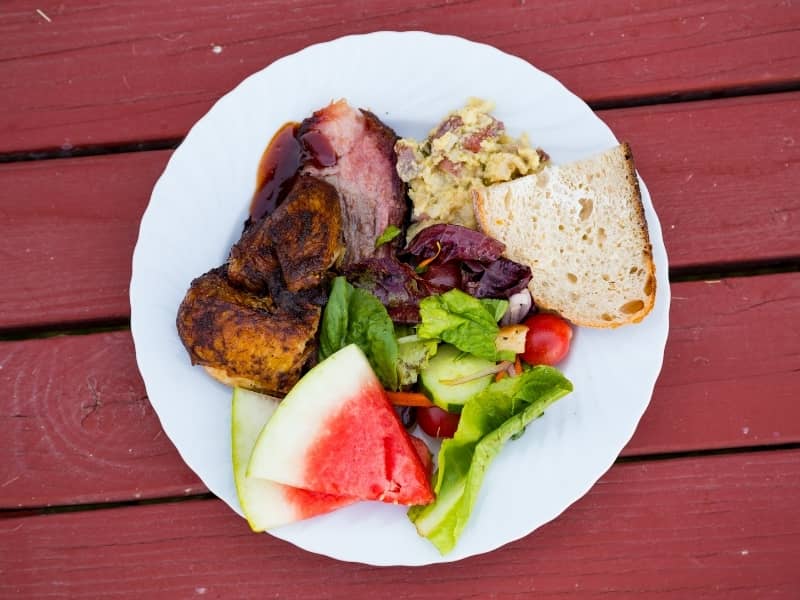
Effective use of color can improve portion control. Change the colors of your plates, bowls, and food. This can help you see how much you serve and eat. Colors can signal to your brain about enough or scarcity. This can change how satisfied and full you feel, often without your realizing it.
3.1. How Plate Color Influences Serving Sizes
The color of your plate plays a vital role in how much food you serve yourself. Studies say that contrasting plate and food colors can lead to smaller servings. A bright red plate with a white meal catches the eye. This makes the portion look smaller, so you serve less. Using similar color combinations can make servings look larger. When the food matches the plate’s color, it tricks your eyes into seeing a smaller portion.
3.2. The Effect of Food Color on Eating Speed and Quantity
Playing with the colors of your meals can change how fast you eat and how much you eat. Bright colors in foods, like fresh fruits and veggies, can boost your appetite. They invite you to enjoy each bite. This helps you eat less.
Research indicates that brighter-colored foods prompt slower eating speeds. A colorful salad full of different hues makes you want to enjoy your meal. It engages your senses more than a bland dish does. In contrast, lighter or monochromatic meals might induce quicker consumption without optimal satisfaction. Food color and presentation affect your eating experience. They help you eat with awareness, which may result in a lower intake. Grasping these factors enables you to use color in an effective manner. This can create a satisfying meal. It supports your goal of eating less and feeling fuller longer.
IV. Practical Strategies for Using Color to Manage Appetite

You can manage your appetite better by adding certain colors to your meals. Pick food colors that make the dish look great and create a pleasing experience. This can help you feel fuller. Bright fruits and veggies give us important nutrients. They also boost our health and can help reduce overeating. Try using contrasting colors to make a fun palette. This can excite your senses and help keep portion sizes in check.
4.1. Designing Your Plate: Color Combinations for Fullness
Mixing different colors on your plate can improve your meal and make you feel fuller. Mix fibrous greens like spinach and kale with colorful veggies. Try peppers, carrots, or beets for extra flavor. This not only makes your food look good, but it also helps you choose healthy options. A colorful salad or stir-fry looks great and offers balanced nutrition. This helps you feel full for a longer time.
4.2. Mindful Eating: Engaging Your Senses Beyond Taste
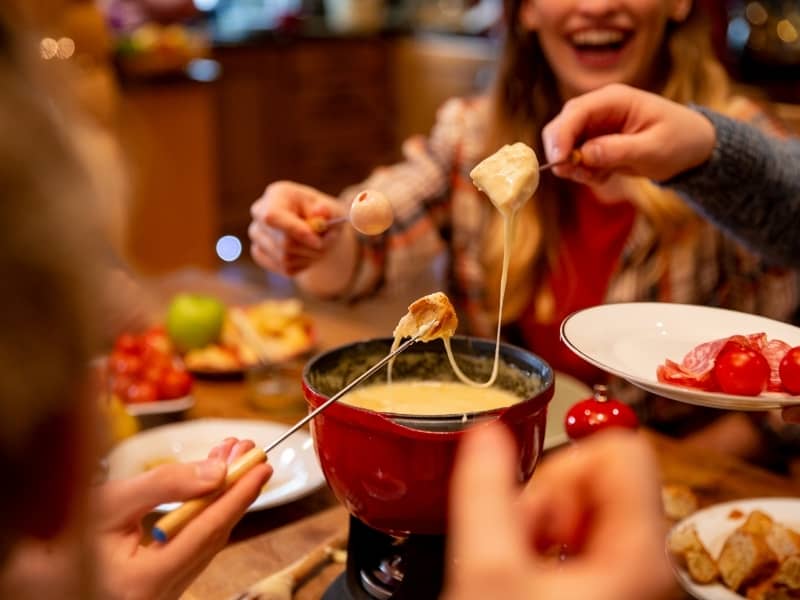
Eating with awareness can enhance your satisfaction and assist in managing your appetite. Use your senses to enhance the experience. Pay attention to the textures, colors, and smells of your food. They can make eating more enjoyable than taste alone. Noticing how food looks and smells makes your meals more enjoyable. It helps you appreciate what you eat even more. Being aware can help you eat at a slower pace and improve your digestion. It also lowers the chances of overeating.
To engage your senses, consider creating an immersive atmosphere while you eat. Eat in a bright space where colors stand out. Use nice tableware and enjoy the beautiful presentation of your meal. Take small bites. Let the flavors and textures unfold on your palate. Each crunch or burst of juiciness pulls you deeper into the experience. This mindful approach helps you connect with your food. It teaches you to notice when you’re satisfied. You won’t depend on portion sizes or meal times. The goal is to enjoy your meals. It’s important to have a healthy and natural relationship with food.
V. Case Studies: Color in Action for Weight Management
Exploring real-world applications of color psychology reveals compelling insights into weight management. Studies show that certain colors can affect how we eat. This can lead to more mindful eating habits. Knowing these effects can help you use color to improve your food choices and eat less.
-
USC Nutrition Study: People who used red plates ate 30% less than those who used white plates.
-
A study by the University of Toulouse found that blue lighting in dining areas reduced food intake by 25%.
-
Case Study in Singapore: Diners in a cafeteria got blue meals. This change caused a 20% drop in calorie intake over two weeks.
-
Cornell University conducted an experiment. People who drank yellow drinks ate 18% less snack food than those who had clear drinks.
5.1. Successful Diets Leveraging Color Psychology
Some successful diets harness the power of color to promote healthier eating habits. Adding colorful, natural foods like fruits and veggies brightens your plate. It also helps you choose healthier options. Many dieters on the Rainbow Diet® say they feel more satisfied. This helps them crave processed foods less.
5.2. Real-Life Transformations: Testimonials and Insights
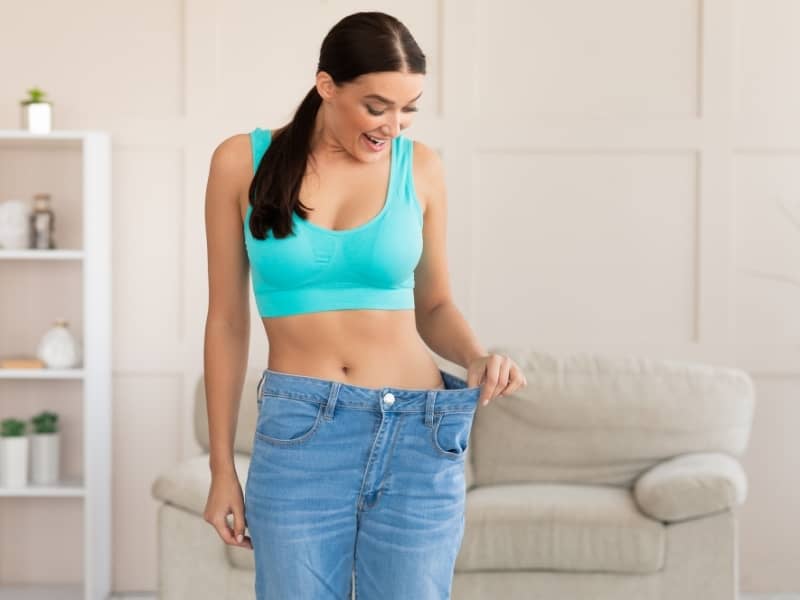
Many individuals have experienced remarkable transformations by integrating color psychology into their meals. Personal stories show that mindful colors can improve your relationship with food. This can lead to lasting lifestyle changes and help you maintain weight loss.
Countless testimonials highlight the significant role of color in shaping eating habits. For example, John, a participant in a color-focused diet program, shed 40 pounds in six months. He found that using red plates helped him eat less. Sarah said that using blue containers for snacks made it easy to control portions. Color can be an easy yet strong tool for managing weight.
Food Color and Appetite: Eat Less, Feel More Satisfied
Thinking about how food color affects appetite can help you eat less and feel full. Using bright colors in your meals can make dining more enjoyable. It may also help lower your calorie intake. Using different colors can boost your senses. This may help you feel happier with smaller meals. This simple change makes your meals look better. It also helps you reach your health goals by encouraging mindful eating. Embrace the power of color in your diet for a healthier and more balanced approach to food.
FAQ
Q: How do food colors affect appetite?
Colors of food can have a strong impact on our hunger and our perception of flavors. Bright colors can spark desire and boost hunger. In contrast, dull colors may lower appetite. This response can change how much people eat and their habits. They may want to eat more of the foods that look good.
Q: Can using artificial food colors help control appetite?
Artificial food colors can improve meal appearance. But they may not aid in appetite control. Colorful foods can be tempting. But focusing only on their looks can cause overeating. It’s important to think about nutrition and portion sizes too. Balancing how food looks with healthy eating is key. This helps control appetite better.
Q: Which colors are most effective in decreasing appetite?
Studies suggest that colors such as blue and purple have a tendency to suppress appetite. Foods that are blue can appear less appealing, reducing the likelihood of overindulgence. Using these colors in meals can help people manage their food intake. They can also enjoy a range of flavors.
Q: Are there specific foods to consume for a feeling of fullness?
Foods rich in fiber, protein, and healthy fats are often more satisfying. They help you feel full longer. Examples include fruits, vegetables, whole grains, legumes, nuts, and lean proteins. Mixing colorful, healthy foods makes your plate look good. It also helps you feel full and boosts your health.
Q: How can I use color psychology to enhance my meals?
Use color psychology by making meals colorful. Add a mix of fruits and vegetables. Mix colors on your plate. Include greens like spinach and broccoli. Add reds such as tomatoes and bell peppers. Don’t forget yellows like corn and more bell peppers. Finally, enjoy purples like eggplants and beets. This will make your meals look better. It also helps provide different nutrients that can meet your hunger.
Last Updated on July 31, 2025 by Holistic Healths


